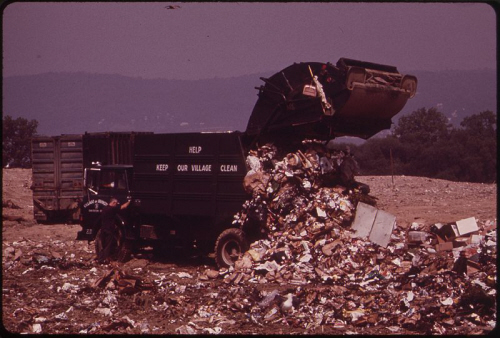Where does trash really go? A common misconception is that if we simply throw something away, then it will magically go to a place where we can forget about it forever. However, acting out of convenience and without consideration for the bigger environmental picture (and for our future), we have contributed to a throwaway culture in America. The SnagFilms documentary Trashed illuminates five major ways in which the seemingly trivial act of throwing away garbage has much more profound environmental and societal implications.
- There is a limited amount of landfill space. In 2007, the largest landfill in the United States held 100 million tons of trash. The maximum occupancy of the landfill is 150 million tons, and this number will be reached in the very near future (possibly in 2013).
- We throw away out of convenience. Because societal conventions have us constantly wanting to move on to the next fad or technology, we are throwing away televisions, cell phones, computers, and other plastics in exchange for shinier new ones. Unsurprisingly, these new technologies will also become our future garbage.
- Not all trash in the ocean will wash ashore. While some of the debris that comes into the ocean from rivers and storm drains eventually washes ashore, a great deal of trash will break up to become micro-particles. What’s more, certain parts of the ocean concentrate this debris. For instance, the Eastern Garbage Patch off the Pacific Coast is twice the size of Texas. Trash particles are funneled into this area causing major environmental concerns.
- Plastic in the ocean does more than just pollute. It also acts as a giant sponge for oil, making ocean clean up that much more difficult and ocean life that much more at risk. As just one example, birds that go to the ocean for food mistake floating plastic debris for fish and feed it to their young. When these birds die and decay, one can see their remains. These consist of bones, feathers, and the plastic lighters and bottle caps that killed the birds.
- Products retain little economic value regarding how they are disposed of. Caring about trash is not just environmentally conscious; it’s also economic. Currently, products are valued for the tasks they perform; yet, what also needs to be of importance is how the product is disposed of. This concept will assuredly create economic incentives for “greener” and more recyclable materials.
These problems are addressed in the SnagFilms documentary Trashed, and the film aspires to inform the general public about the importance of sustainable waste disposal. The lack of education regarding consumption and the effects of consumption has led to an enormous societal problem and environmental threat. Trashed teaches us that while there may be no individual solution, as a collective, movements, whether they are economic or social, can help to chip away at our throwaway culture.
Image credit: NARA at Wikimedia Commons


Austin
Being a throwaway society is obviously an problem that needs to be fixed. I believe that the power to fix this problem lies in the hands of the companies that make everything we use today. If these companies manufacture products that are made to become obsolete quickly, then people will throw them away quickly. However, if they manufacture products that are built to last, then people will not have to throw them away.